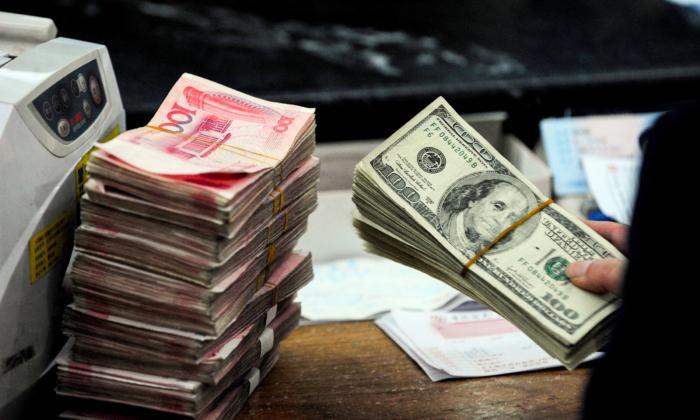Many it seems—the White House but also much of the media and Wall Street—took heart from the Commerce Department’s fourth-quarter report on the nation’s gross domestic product (GDP).
It seemed to confirm that after the Omicron-burdened summer quarter, the economy had returned to the powerful and broad-based recovery tracked during the year’s first half. But that interpretation is misplaced. One didn’t have to look too far beyond what is usually called the “headline figure” to find considerable cause for concern.
That “headline”—overall real GDP growth—did indeed look good. It ticked up smartly from the 2.3 percent annual growth rate recorded for the third quarter and even exceeded the impressive overall real growth of 6.5 percent averaged earlier in the year. The problem is that the bulk of this surge had nothing to do with sales to consumers or businesses, or homebuyers, or even governments. It was largely a reflection of inventory restocking by retailers and wholesalers.
According to the Commerce Department’s Bureau of Economic Analysis, businesses added some $224.7 billion to inventory stocks in the fourth quarter. That’s a huge change from the average $60.2 inventory depletion of the prior three quarters and at least twice the size of any historic accumulation. Were it not for this surge, annualized real GDP growth for the quarter would have been closer to 2.0 percent, actually lower than in the third quarter and certainly slower than the recovery surge of 2021’s first half.
To be sure, the ability to restock inventories at such an impressive rate offers a welcome sign that perhaps supply chain shortages are abating. So do the surges in imports and exports also recorded in the Commerce Department’s report. But looking forward, this kind of inventory rebuilding or the import–export lift isn’t likely to be repeated.
On the contrary, without an urgent need to catch up for supply interruptions, the growth of both exports and imports will almost certainly slow. And if history is any guide, retailers and wholesalers are likely to draw down these rebuilt inventory stocks to meet future sales.
Otherwise, the picture on final sales spoke almost universally of weakness. Real consumer outlays expanded 3.3 percent at an annual rate. That was faster than the third quarter’s 2.0 percent rate of expansion, but well below the robust 11.7 percent rate averaged during the first half of the year.
Business spending on new productive facilities and equipment expanded at a meager 2.0 percent annual rate—up only slightly from the third quarter’s 1.7 percent rate, but far below the 11 percent annual rate of expansion averaged during the first half of 2021. The only bright spot for business was the 10.6 percent rate of expansion in purchases of technology, what the Commerce Department calls “intellectual property”—but even that was significantly slower than the 14 percent rate of expansion averaged in this area earlier in the year.
Real government spending, after a surge earlier in the year, declined outright during the fourth quarter: 4.0 percent at the federal level and 2.2 percent at the state and local level.
Nor was there good news on the big question of the day: inflation. The Commerce Department’s inflation measure—the deflator—is usually more muted than the more popularly recognized consumer price index, but it rose at a 6.9 percent annual rate during the fourth quarter, up from the 6.0 percent rate during the summer quarter and considerably above the 4.3 percent of the first quarter or the 2.0 percent rate recorded for all of 2020.
What is most discouraging is that the surge occurred across a broad front: 6.5 percent in the consumer sector, compared with 3.8 percent in the first quarter and 7.5 percent for productive equipment and systems, compared to 1.0 percent in the first quarter. Even government suffered an inflationary surge. The federal sector saw a 5.3 percent annualized rise in prices, compared with 4.0 percent in the first quarter. State and local governments saw 8.8 percent inflation during the fourth quarter, compared to 6.3 percent during the first quarter.
If the headlines seemed to encourage, the details make two unwelcome conclusions clear: the post-pandemic recovery seems to be losing momentum, more precipitously than most anyone expected; and the inflation of which so many are beginning to worry seems more entrenched than ever. Things could turn around—on both counts—but what the nation has now is neither encouraging nor welcome.





